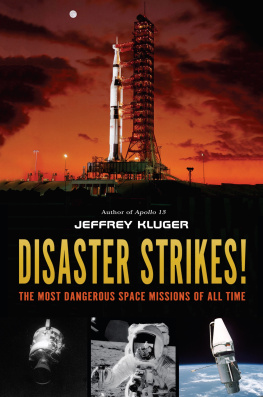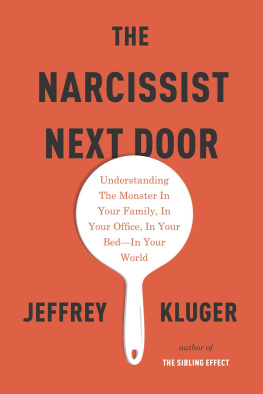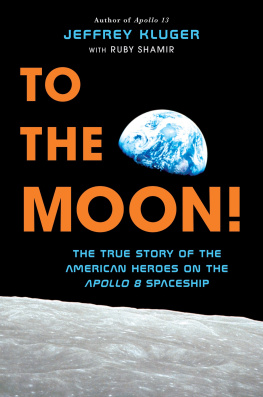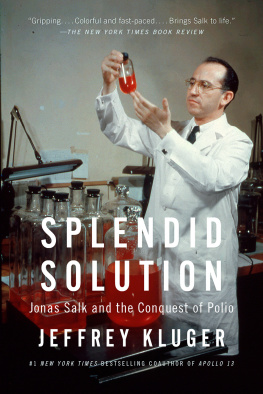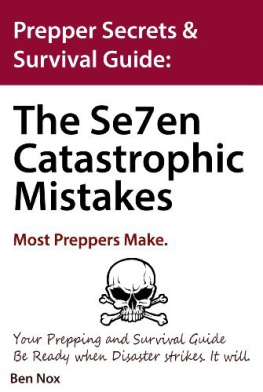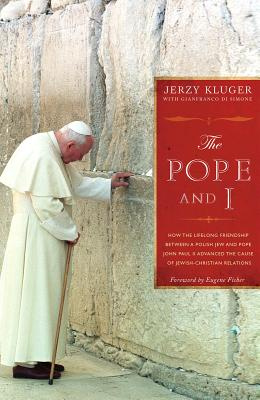Jeffrey Kluger - Disaster Strikes!
Here you can read online Jeffrey Kluger - Disaster Strikes! full text of the book (entire story) in english for free. Download pdf and epub, get meaning, cover and reviews about this ebook. City: S.I., year: 2019, publisher: Penguin Young Readers Group, genre: Detective and thriller. Description of the work, (preface) as well as reviews are available. Best literature library LitArk.com created for fans of good reading and offers a wide selection of genres:
Romance novel
Science fiction
Adventure
Detective
Science
History
Home and family
Prose
Art
Politics
Computer
Non-fiction
Religion
Business
Children
Humor
Choose a favorite category and find really read worthwhile books. Enjoy immersion in the world of imagination, feel the emotions of the characters or learn something new for yourself, make an fascinating discovery.
- Book:Disaster Strikes!
- Author:
- Publisher:Penguin Young Readers Group
- Genre:
- Year:2019
- City:S.I.
- Rating:3 / 5
- Favourites:Add to favourites
- Your mark:
- 60
- 1
- 2
- 3
- 4
- 5
Disaster Strikes!: summary, description and annotation
We offer to read an annotation, description, summary or preface (depends on what the author of the book "Disaster Strikes!" wrote himself). If you haven't found the necessary information about the book — write in the comments, we will try to find it.
Disaster Strikes! — read online for free the complete book (whole text) full work
Below is the text of the book, divided by pages. System saving the place of the last page read, allows you to conveniently read the book "Disaster Strikes!" online for free, without having to search again every time where you left off. Put a bookmark, and you can go to the page where you finished reading at any time.
Font size:
Interval:
Bookmark:
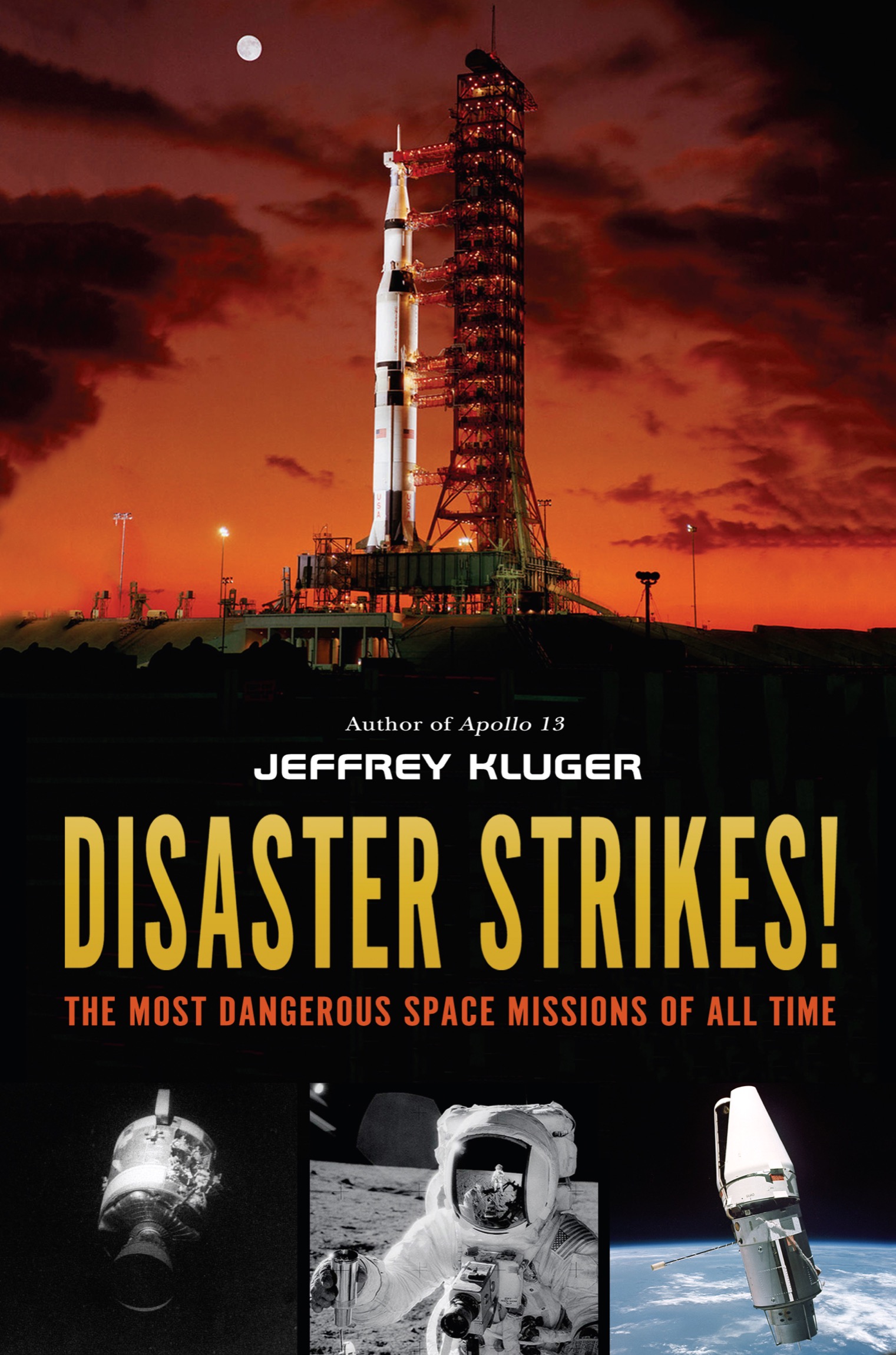
To the Moon!
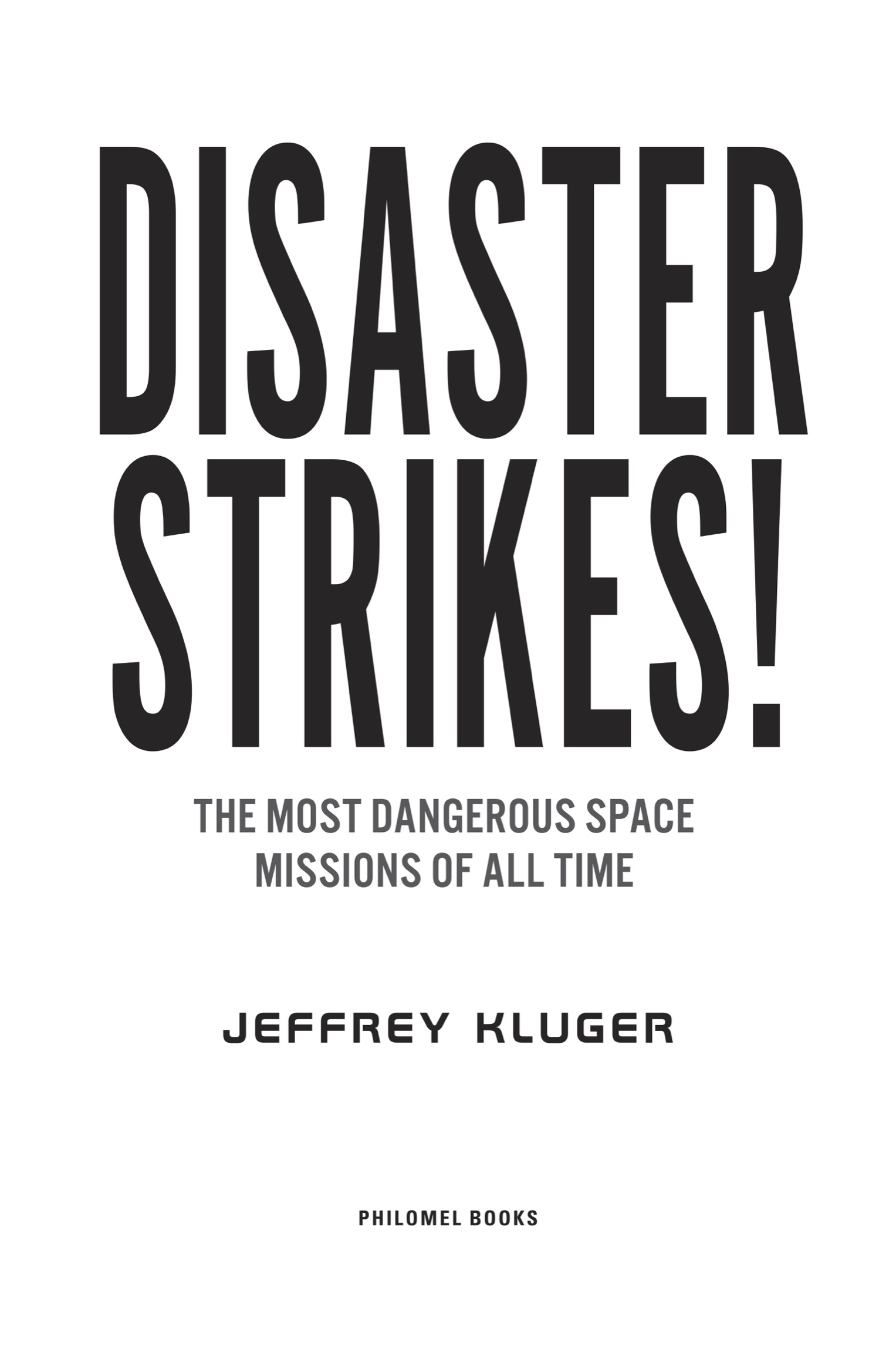
Philomel Books
An imprint of Penguin Random House LLC
New York

Copyright 2019 by Jeffrey Kluger.
Penguin supports copyright. Copyright fuels creativity, encourages diverse voices, promotes free speech, and creates a vibrant culture. Thank you for buying an authorized edition of this book and for complying with copyright laws by not reproducing, scanning, or distributing any part of it in any form without permission. You are supporting writers and allowing Penguin to continue to publish books for every reader.
Philomel Books is a registered trademark of Penguin Random House LLC.
Library of Congress Cataloging-in-Publication Data
Names: Kluger, Jeffrey, author.
Title: Disaster strikes! : the most dangerous space missions of all time / Jeffrey Kluger. |
Description: New York, NY : Philomel Books, [2019] | Audience: Ages 812. | Audience: Grades 4 to 6. |
Identifiers: LCCN 2018038095| ISBN 9781984812759 (hardcover) | ISBN 9781984812766 (e-book) |
Subjects: LCSH: Space vehicle accidentsJuvenile literature. | Manned space flightHistoryJuvenile literature. | Outer spaceExplorationHistoryJuvenile literature. | Classification: LCC TL867.K58 2019 | DDC 363.12/41dc23 |
LC record available at https://lccn.loc.gov/2018038095
Edited by Jill Santopolo.
The stories told in this book are adapted from the Countdown
podcast that the author wrote for Time magazine.
Version_1
TO MY DAUGHTERS,
WITH LOVE
 INTRODUCTION
INTRODUCTION 
TRAVELING IN SPACE might be the most thrilling thing a human being can dounless, of course, it turns out to be the most horrifying. Just as often, it can wind up being both.
There has never been any form of exploration or travel that is entirely safe. Danger and even death lurk in the crack-up of a car, in the crash of an airplane, in the slow-motion disaster of a sinking ship. Climb a mountain, paddle along a river, merely hike a trail in an unfamiliar wilderness and you expose yourself to at least some kind of risk.
Space is different, though, because space is a place we were not meant to be. Even when youre miles above the ground in a million-pound airplane hurtling along at 500 miles per hour, youre still within the skin of the atmosphere, still contained by the bio-dome of the world, where there is air and water and warmth and life. In space, all thats missing. Its a place of hard vacuum, of killing cold, of blistering radiation. Its a place that cant be reached at all without giant machines that carry millions of pounds of explosive fuel and are able to reach speeds in the tens of thousands of miles per hour.
Thats not easy. Thats not safe. And that can cost lives.
Since 1961, when Yuri Gagarin, a Russian cosmonaut, became the first human being in space, orbiting the Earth in his Vostok 1 spacecraft, more than 500 people have followed him aloft on more than 300 different missions. Nine of those missions flew to the moon, carrying twenty-four different Americans, twelve of whom walked on the lunar surface.
Every single one of those astronauts or cosmonautsor taikonauts, too, now that China has begun its own human space programhas gone aloft knowing the risks involved. But all of them have gone aloft mindful of the singular splendor of the journey, too.
Its not just the weightlessnessthe sudden ability to fly, after a lifetime spent as an earthbound creaturethough thats a lot of fun. And its not just the viewthe sight of the Earth far below and the vast vault of space above, the stars brilliant, white and strangely untwinkling, since there is no intervening atmosphere to distort the view.
Its the sense of doing something improbable, of touching something untouchable, of being a pioneer. We think nothing of spending twelve hours in an airplane traveling 7,000 miles between New York and Beijing, but we recall in admiration and wonder the twelve-second, 120-foot powered flight that Orville and Wilbur Wright achieved on December 17, 1903, because Orville and Wilbur Wright went first. One day we may all get to take vacation trips to the moon, but they will mean nothing compared to the mere eighty-eight minutes Gagarin spent aloft on his single orbit of the Earth.
Its that sense of going first, of walking point for the whole human species, that drives the men and women who take the risk of flying in space. I once asked Pete Conrad, the commander of Apollo 12 and the third person to walk on the moon, if he was at least a little anxious the entire time he was on the lunar surface, aware that if the engine of his lunar module didnt fire as it was supposed to and get him back into space, hed be marooned forever. Nah, he answered. I was a happy guy on the moon.
I once similarly asked Jim Lovell, who went to space four times, including two trips to the moon, on Apollo 8 and Apollo 13, if on the last night he was home before all of those trips, he didnt look around his living room and think, Wow, if something goes wrong, Ill never see this house again. His answer: No. If you thought that way, you wouldnt go.
So the men and women who go to space dont think that wayor if they do, they learn ways to shake off those thoughts and to press on with their mission. That, of course, doesnt mean things wont go wrong. That doesnt mean the explorers wont face danger. And that doesnt mean that the risk doesnt exist that they will indeed never see their homes again.
There have been many harrowing moments in the long history of human space flight, especially in the earliest years, when the United States and the Soviet Unionthe former Russian empirewere competing to be the first nation to put a human being on the moon. The two countries were the worlds greatest superpowers and were also bitter rivals. Both were also in possession of thousands of fearsome nuclear weapons, which made the stakes of their rivalry potentially deadly.
The race to the moon was a peaceful way for that competition to play out, but it was still a dangerous game to play. The rushing sometimes made both countries recklesscutting corners, breaking rules that good engineers and flight planners normally wouldnt breakand they sometimes paid a terrible price for that. Even when the space race was won, however, even in the modern era, when traveling to Earth orbit has come to seem routine, the dangers remain. Space doesnt change just because we think were familiar with it, that weve gotten good at visiting it. And the dangers that lurk there dont change, either.
There is no way of saying with certainty what the scariest, most dangerous, most heart-stopping missions have been out of the 300-plus that have been flown in the past six decades. But the dozen missions whose stories are told in these chapters are awfully good candidates. There will be many more human space flights to comeincluding ones that may take us back to the moon and eventually to Mars. And there may be other emergencies and tragedies to rival these twelve.
Font size:
Interval:
Bookmark:
Similar books «Disaster Strikes!»
Look at similar books to Disaster Strikes!. We have selected literature similar in name and meaning in the hope of providing readers with more options to find new, interesting, not yet read works.
Discussion, reviews of the book Disaster Strikes! and just readers' own opinions. Leave your comments, write what you think about the work, its meaning or the main characters. Specify what exactly you liked and what you didn't like, and why you think so.

